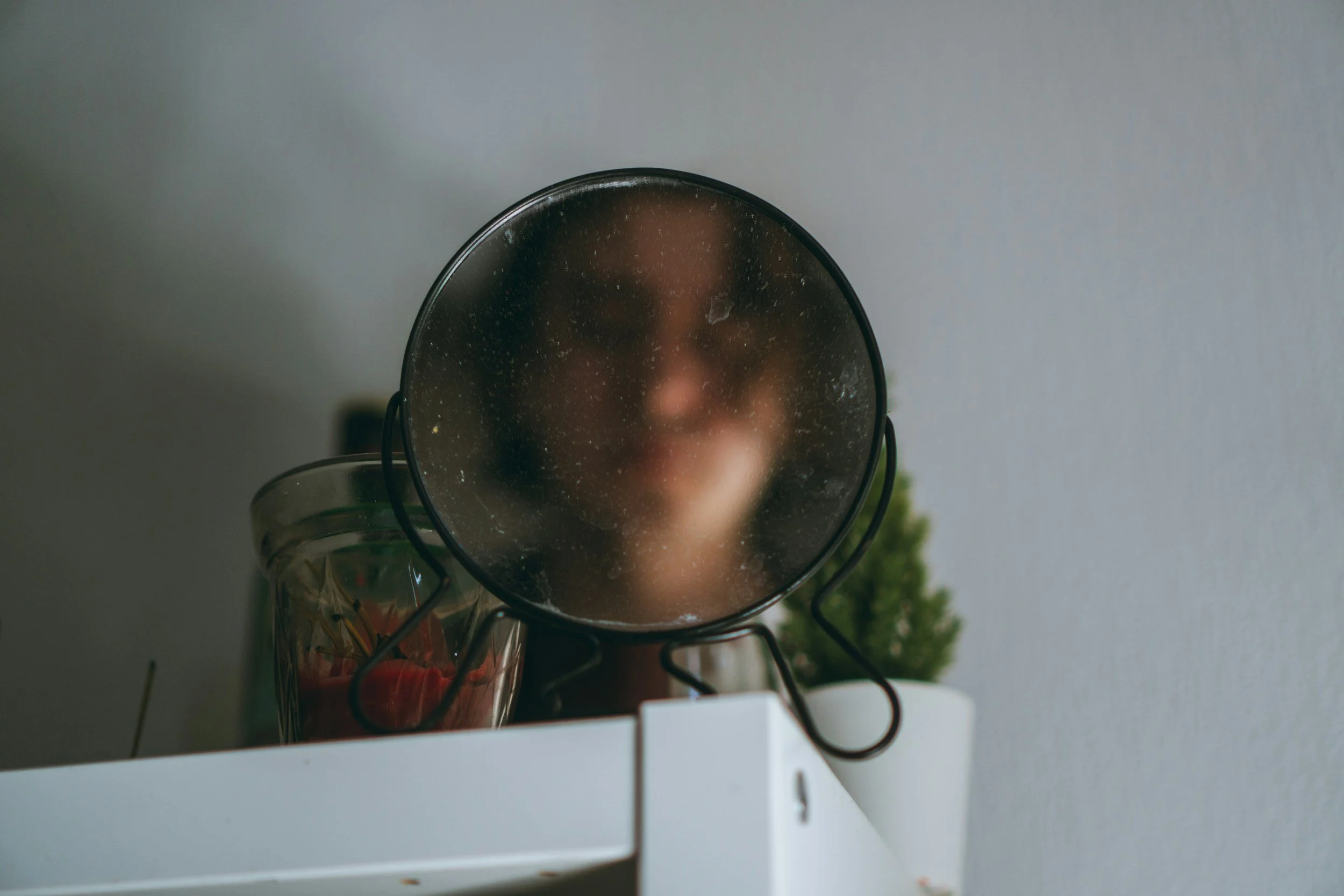Reflections of Fear: The Enduring Terror of Bloody Mary
The bathroom light flickers. A low hum fills the room, almost imperceptible at first, but enough to make your skin crawl. Around the circle of nervous teenagers, flashlights jitter like fireflies in the dark. Someone giggles, pretending not to be scared. They know the dare. They know the rules.
“Say her name three times,” whispers the ringleader, her voice trembling like the candle flame on the counter. “Bloody Mary… Bloody Mary… Bloody Mary.”
The mirror is just glass. It reflects the anxious faces of the girls—but maybe it reflects something else. Something older. Something waiting.
For generations, this simple dare has been a rite of passage, a test of courage, and a brush with something unexplainable. And as PseudoPod’s August 1, 2025 episode reminds us, Bloody Mary isn’t just a tale from the past. She thrives in the modern imagination, still owning sleepovers and TikTok dares alike.
A Queen Turned Legend
The origins of Bloody Mary are murky, as many urban legends are. Some trace her back to Mary I of England, the Tudor queen whose reign was steeped in blood and religious purges. Others see her as a spirit born from folk beliefs about restless female souls, punished in life and haunting mirrors in death. Across cultures, mirrors have long been considered portals—a liminal space between the living and the dead.
By the 1960s and ’70s, the legend had evolved into a staple of American adolescence: bathrooms, flashlights, and whispered incantations. It was less about monarchs and more about testing bravery, curiosity, and fear. Teenagers dared each other to summon her, and in doing so, they engaged with a story that blurred the line between imagination and reality.
PseudoPod’s Deep Dive
In their latest episode, PseudoPod doesn’t just retell the story—they analyze why it continues to terrify. Key takeaways from the August 1, 2025 release include:
Psychological Horror: The fear of facing oneself, the anxiety of mirrors as gateways, and the collective panic that spreads in tight spaces.
Cultural Commentary: Bloody Mary persists because she reflects social anxieties—teen peer pressure, female power, and the consequences of disobedience.
Modern Adaptation: From Snapchat streaks to TikTok trends, the legend has evolved. Today’s teenagers summon Mary with phone screens glowing, creating viral short-form horror moments.
PseudoPod also examines why the tale transcends generations. It’s mutable, interactive, and deeply personal. Each retelling is a ritual, and each summoner tests the boundaries of fear in a controlled, yet thrilling way.
The Mechanics of Fear
What makes Bloody Mary terrifying isn’t just her name or her summoning—it’s the psychological architecture of the story. The ritual itself is structured like a maze: a dark room, a mirror, repetition, isolation. Each element primes the brain to anticipate a threat. Our imagination fills in the blanks, turning shadows into a visage of the queen herself, eyes wide, hair matted, lips stained crimson.
Moreover, the legend embodies a universal theme: confronting the unknown in a controlled setting. It’s safe to be scared—until you see something you shouldn’t.
Why She Still Rules the Sleepover
Even in 2025, when teens scroll through horror clips at lightning speed, Bloody Mary commands attention. PseudoPod’s episode highlights that she is enduring because she’s interactive folklore. Unlike static myths, she requires participation. The fear is not just told—it’s enacted. And in the process, each generation stakes its claim in the legend, ensuring Mary remains eternal.
From candlelit bedrooms to dimly lit TikTok videos, her spectral influence continues to flourish. She’s a mirror queen in a digital age, proof that some stories refuse to die.
A Mirror You May Not Want to Look Into
Next time you find yourself alone in a darkened bathroom, smartphone propped on the counter or flashlight in hand, remember: some legends are not content to stay confined to history books. They linger. They watch. And if you summon her—even just out of curiosity—you may find that the queen of mirrors is still very much alive.
Key Takeaways & Analysis:
Endurance: Bloody Mary persists because she combines folklore, ritual, and personal experience.
Psychology: Mirrors trigger self-consciousness and fear, magnifying suspense.
Cultural Relevance: The legend adapts to technology, from sleepovers to TikTok videos.
Symbolism: A female figure of power and vengeance, reflecting social and personal anxieties.
